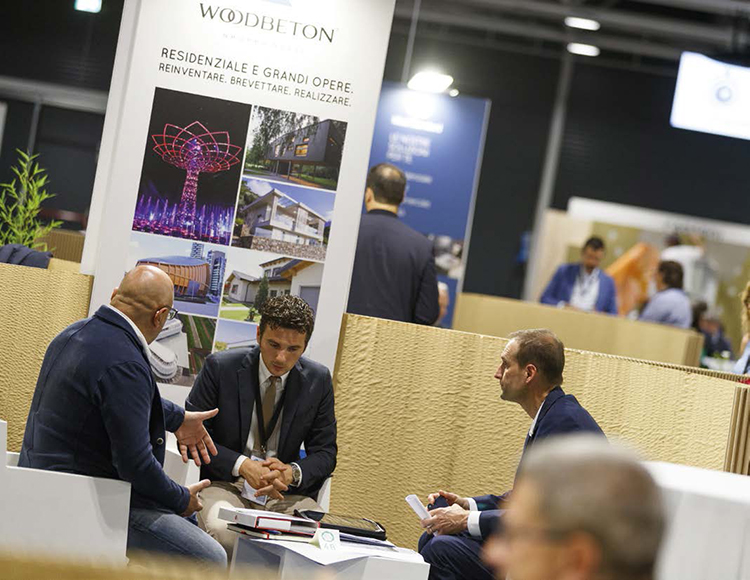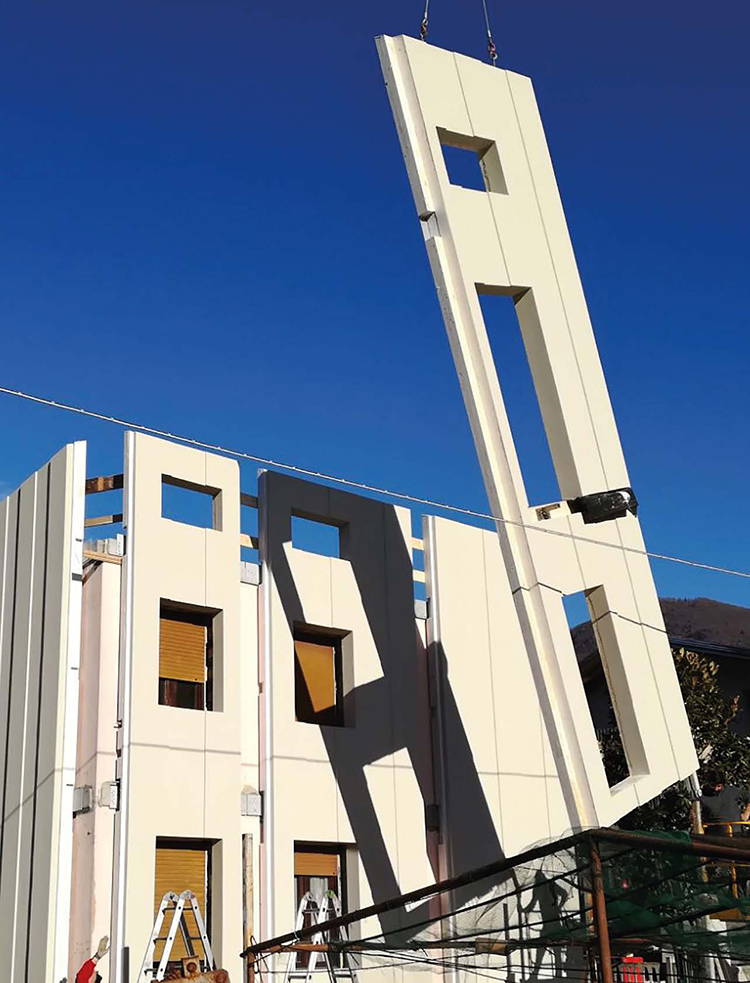We need a paradigm shift, even in the construction sector. Deep, fast and pervasive. In one word, ground-breaking: or better “disruptive,” as the innovator’s jargon calls it. Innovators have once again agreed to meet in Riva del Garda for the seventh edition of REbuild, the platform that brings together the vanguard of the construction and renovation sectors in Italy.
Decarbonisation is the key word for this edition. An initiative that, as highlighted by Gianni Silvestrini from the Kyoto Club, if in the energy sector is in full blown disruptive phase, in the construction sector it is still struggling for attention. “The sector” he claims “is made up of a huge basin of possible interventions. Italy’s real estate heritage is the oldest in the world after Germany” claims Thomas Morini, founder and President of REbuild, “With 17 million building units that need renovation, from here to 2050 we would need to complete one every minute!”
This could be overwhelming. However, at REbuild a famous Churchill quote is often used: “Never let a good crisis go to waste.” Therefore, that which appears as a hard mountain to climb can reveal itself to be a great opportunity. The point being that we need to concentrate on how to accelerate the change in direction that, at this point, is no longer desirable but an actual necessity.
“Changing home insulation will not mean reaching the objectives, what we need is a profound and radical renewal,” states Ezio Micelli, President of the REbuild science committee. Therefore, it isn’t about single interventions, but rather a revolutionary approach in the entire supply chain. In fact, decarbonisation doesn’t just mean optimising the consumption of energy and moving on to renewables, but also reducing the waste of resources in every phase of a building’s lifecycle: from the design to the choice of materials and the production of components, from the building site to requalification and decommissioning. This implies fielding digital technologies, offsite construction and circular economy principles.

Building Circularly
Waste is inexpensive. This distortion has supported the success of the linear economy, normalising the removal of all costs related to that which ends up in the tipping yard. However, that price in environmental and also in monetary terms is by no means as irrelevant as we once thought. For example, it isn’t irrelevant for a constructor that finds himself in a building site, with a building to dismantle, demolish and rebuild, and has to take on the task of disposing of rubble, waste and maybe even the rehabilitation of asbestos. From this consideration, which is by no means a given, arise the circular policies of ARUP (the international company dedicated to engineering and design) and COIMA (the Italian platform for investment in real estate), that with REbuild have established the challenges that need to be faced in the construction sector so as to close the loop.
Basically, it boils down to three objectives that tackle the entire sector, from design to decommission. First of all, they propose to increase the amount of work done offsite. The prefabrication of buildings in industrial processes and their successive onsite assembly, enables the optimisation of labour hours and costs, improves safety and reduces the waste of materials and resources by up to 90%. Advantages that are not applicable exclusively to construction, but also to renovation. In this field, a highly innovative and current example is Woodbeton with their Rhinoceros wall: a multifunctional exoskeleton that, when applied like a shell on the outside of a building, allows them to be insulated and at the same time renders them anti-seismic; all of which can be done without having to make occupants leave the building and without producing rubble.
The second challenge is learning to plan disassembly. Designing a building and choosing materials and components whilst already considering their end of life is a fundamental exercise in forward thinking, which will pay its dividends. At the moment of decommissioning, products and materials that have a high amount of recycled or recyclable material can in fact be reinserted into the productive cycle, thus generating more value. The problem for those planning at the moment is that the market doesn’t offer a great choice in materials certified for circularity. The transition has only just started, but already different sustainability protocols that are being considered even in the world of finance (like LEED) have started to include circular criteria for construction components. Finally, flexibility. In the circular economy, before recycling comes reuse: a valid principle for buildings. Designing a modular and flexible structure, in both its function and use, makes it adaptable to market cycles. A shopping centre can become a hotel, or a condominium or office spaces. In this way constantly reinventing itself without wasting resources and space.

Follow the Money
There is still a missing link in the circle: money. In short, it is about understanding in what direction the world of finance is going. It appears, as this edition of REbuild has continued to emphasise, that the finance world is finally starting to really appreciate sustainability.
“Investment funds today – explains Stefano Corbella of COIMA – give a positive evaluation of offsite construction, the circularity of processes and materials, and the flexibility and modularity of construction. The ability to reconvert a building from a shopping centre to some other function, in some ways assures that the real estate doesn’t remain deserted because of, for example, e-commerce.”
If the finance world moves towards sustainable construction, the market for deep renovation still remains very limited. This means that the costs of the much needed renovations are still too high, both for families as for many public entities. Like a dog that chases its own tail, if the market doesn’t expand then costs cannot decrease. To break this vicious circle there are new initiatives such as Energiesprong, which recently arrived in Italy from Holland.
Miorin explains that: “It is about aggregating demand so as to build a favourable environment for a large scale process that puts efficiency and renovation in real estate within everybody’s reach.” The problem that needs to be solved is not just the scarce availability of funds with which to address these challenges, but first to address the low productivity of the real estate supply chain, that therefore keeps prices high. Miorin concludes: “With industrialisation, offsite production, and circular recovery this productivity can increase, lowering costs and sparking a true market for requalification.”
ReBuild, www.rebuilditalia.it/en


